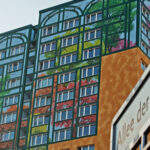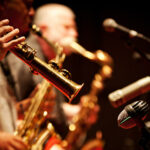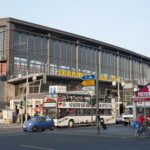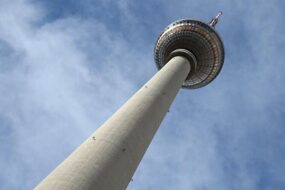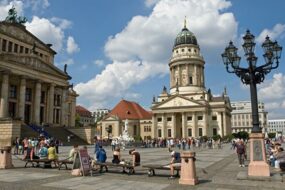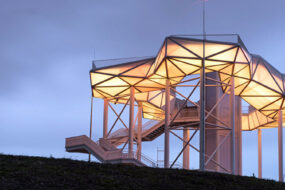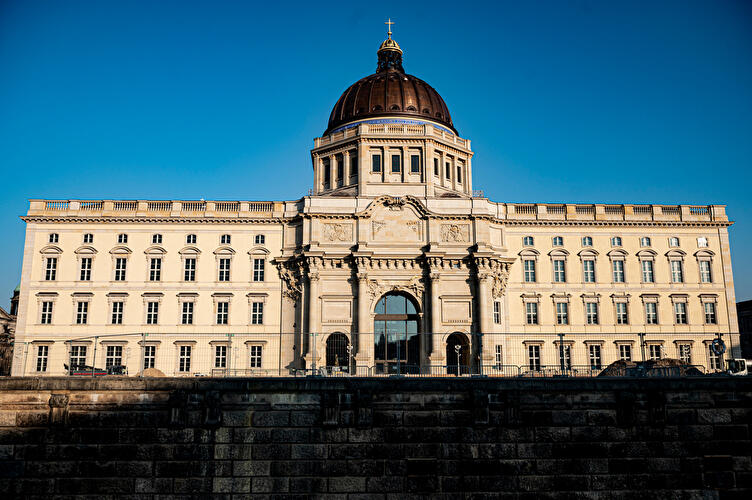
Since its reconstruction in 2020, the Berlin Palace has become a vibrant space for art, culture, and science in the heart of Berlin.
The restoration of the Berlin Palace, also known as the Stadtschloss, has been one of the most talked-about projects in the city. After standing for over six centuries, this historic site is now home to the Humboldt Forum, blending the old with a modern concept for its use.
A Unique Blend of History and Modernity
The Berlin Palace stands out as a truly unique structure. While three of its facades have been meticulously reconstructed to reflect the original architecture, the side facing the River Spree features a modern design. Inside, the palace has been entirely reimagined to house the Humboldt Forum, where various cultural and scientific institutions now present exhibitions and programs for visitors.
The Original Berlin Palace
The story of the Berlin Palace dates back to 1443, when Elector Frederick II laid its foundation in what was then the small twin towns of Berlin and Cölln. By 1451, the Elector moved into the new Hohenzollern residence, which quickly became the seat of the court and governing authorities. Over the years, the palace was expanded and rebuilt multiple times. Notably, Elector Joachim II commissioned a Renaissance-style renovation, linking the palace to Berlin Cathedral. Additional changes, such as the construction of the west wing, followed under Elector Johann Georg.
The Baroque Transformation
Following the Thirty Years’ War, Elector Friedrich Wilhelm initiated a major reconstruction, transforming the palace into a Baroque masterpiece under architects Johann Gregor Memhardt and Johann Arnold Nering. The redesign was inspired by Italian Baroque and included a formal garden modeled after Dutch styles. King Frederick I, formerly Elector Frederick III, further enhanced the palace, transforming it into a grand Baroque structure.
From the Weimar Republic to Demolition
During the Weimar Republic, the palace housed a museum and other institutions, but in 1945, it was nearly destroyed by bombing. In 1950, under orders from East German leader Walter Ulbricht, the remaining structure was demolished, despite public opposition. The area became known as Marx Engels Square and was used occasionally for events.
The Palace of the Republic
In 1971, Erich Honecker, Ulbricht’s successor, commissioned the construction of the Palace of the Republic on the same site. Completed in 1976, it served as a prestigious venue for socialist East Germany. However, after reunification, the building was closed due to asbestos contamination and eventually demolished in 2008 following extensive public debate.
Rebuilding the Berlin Palace as the Humboldt Forum
After much public discussion, the decision was made to rebuild the Berlin Palace as the Humboldt Forum. Construction began in 2013, and three of the palace’s Baroque facades were carefully recreated. The riverside facade features a modern design by architect Franco Stella. The Humboldt Forum officially opened in 2020, housing museums and spaces for cultural and scientific events. The controversial addition of the dome cross, which was not part of the original design but was added in 1854 by Frederick William IV, sparked debate due to its historical and religious connotations.
Rooftop Terrace with Stunning Views
Since October 2021, visitors have been able to access the Humboldt Forum’s rooftop terrace, offering panoramic views of Berlin’s iconic landmarks, including Museum Island, the Brandenburg Gate, and the Berlin Cathedral. The terrace is free to visit, and access is barrier-free.
Address:
Schloßplatz 1, 10178 Berlin
Key Architects and Style:
C. Theyß, A. Schlüter, F. E. von Göthe / Renaissance
Rooftop Terrace Hours:
- Mon, Wed, Thu, Fri, Sat & Sun: 10 AM – 8 PM
- Closed on Tuesdays
Access to the rooftop terrace is free of charge.
Public Transportation:
- Underground and Bus options are available to reach the place.
